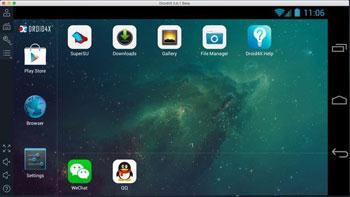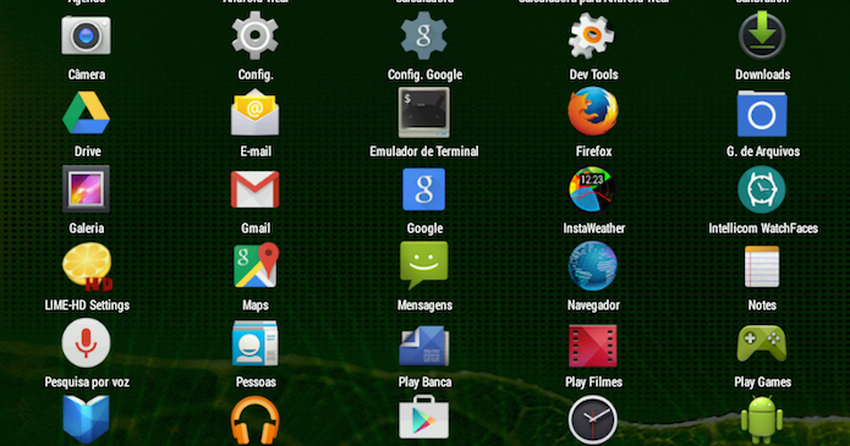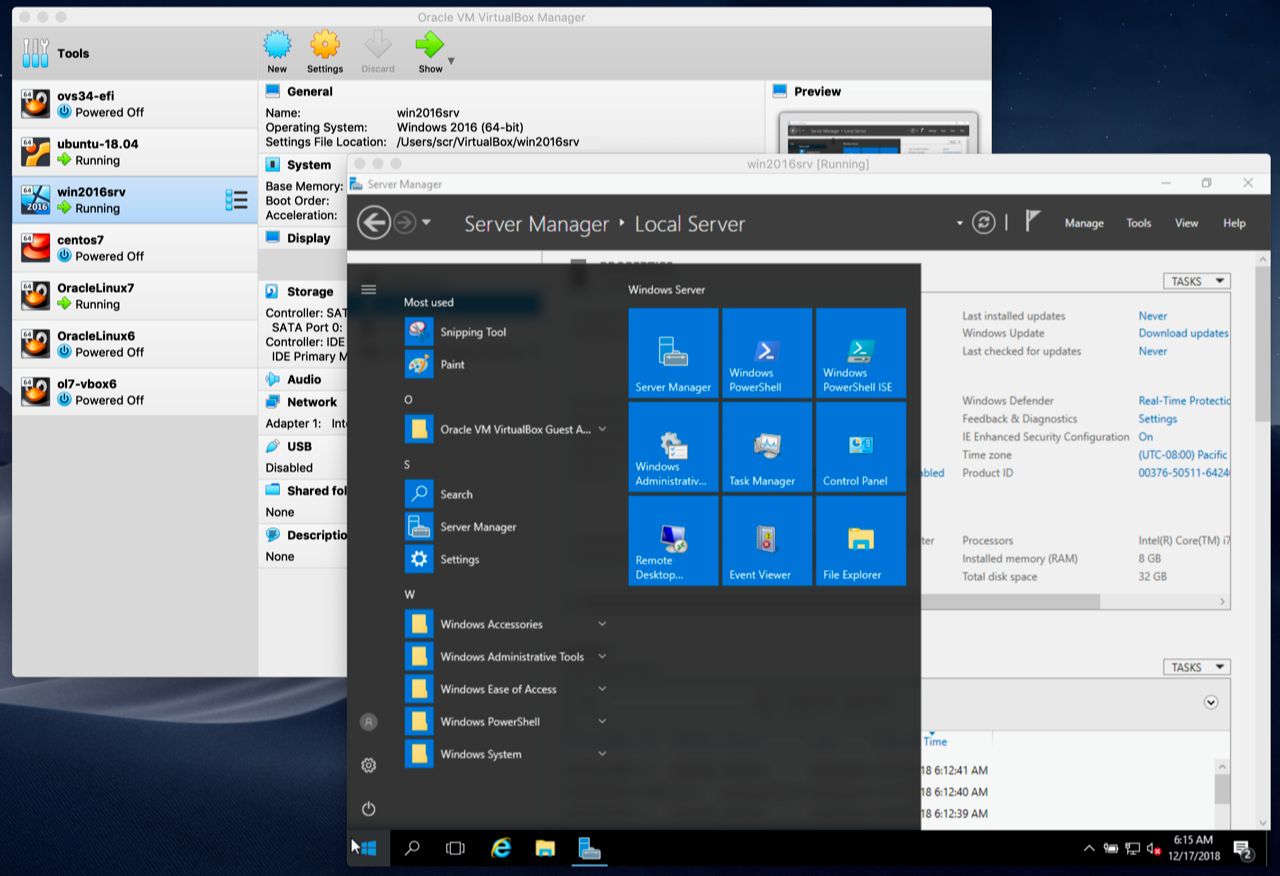- Osx X86
- Install Android X86 Virtualbox
- Mac Os X86
- Android X86 Virtualbox Setup
- Android X86 On Virtualbox


Download VirtualBox (Old Builds) VirtualBox 6.1 (active maintenance) VirtualBox 6.0 (active maintenance) VirtualBox 5.2 (active maintenance) VirtualBox 5.1 (no longer supported, support ended 2018/04) VirtualBox 5.0 (no longer supported, support ended 2017/05) VirtualBox 4.3 (no longer supported, support ended 2015/12). Oracle VM Virtualbox is a free open source hypervisor to run on X86 server / desktop machines to host more guest operating systems on it independently and simultaneously. All the guest operating systems hardware is emulated by the host hypervisor. Oracle VM VirtualBox is a quite powerful x86 and Intel64/AMD64 virtualization software for home and enterprise usage as well. This is the most popular and the most feature-rich programs among free software. VirtualBox runs almost any version of Windows, Linux, and most other Intel-based operating systems on a Mac, Windows, or Linux desktop.
For the software testing purposes and running the apps on the other operational systems, not installed on your PC, there is nothing better than virtual machine. Among the wide spectrum of virtual machines one of the best solutions is VirtualBox from Oracle. At first, it is totally free comparing to other apps for emulating different OS architectures (VMWare and Virtual PC). On the second, it allows to emulate any operational system not only from Windows generation, but also Linux, Unix, Mac OS X and FreeBSD, which reveals the broad gamma of abilities and functions for the user. And on the third, at last, it contains a mass of additional features, which make the interaction process with virtual environment easier and simpler. So, in this article I would like to tell, how to use VirtualBox for Windows 10 for free, how to set it up and configure.
VirtualBox is a virtual environment, which allows to emulate any operational system on the PC, including open-source platforms and archaic systems from Windows generation, like Win 2000 or Win Millennium Edition. In order to use VirtualBox, first you need to download the distributive and install it onto the hard drive. The procedure of VirtualBox installation doesn’t differ from setting up of any other program tool, so you won’t tackle with any problems or open gaps during this routine. After installation you may start operating with it directly at that very moment. In order to handle with virtual OS, you need first to create the virtual disk. Click the “New” button on the top panel.

After that the process of setting up new virtual disk takes place. At the “Type” option field you need to select the type of system, which you want to emulate on new added virtual drive. In the “Version” field you will need to define the version of the OS, specified in the “Type” field. If it is Windows, then the selection will be possible among all the systems from Windows generation, starting from 3.1 build and ending with the latest Win 10 (64-bit) release. In the “Name” field specify the abstract random title of the new created disk, it can have absolutely any value.
Next form is designed to specifying the amount of RAM memory, assigned for the virtual machine. You need to understand, that with this option the system will reduce the amount of RAM on the specified value, augmenting it to the virtual machine, being created.
One more step is related to the creation of new virtual hard disk. By default, the installation suggests you to generate new physical virtual disk, and to perform the further installation right on it. In addition, you may use the existing virtual disk as a storage for emulated OS files. If you are a skillful and experienced user, you may not define the virtual disk at this step and assign it later, when the master of new virtual machine creation completes its work.
If you decide to create a new one, on the following several iterations you will be asked to define the type of virtual hard disk you would like to create, specify the type of storage that will be applied to the physical hard disk, file location and its capacity. When all these settings are ready, click the “Create” button.
On this stage the procedure of new virtual disk creation, based on Windows 10 architecture, is approaching to the end. Now everything, that is left, is to attach ISO-file with the new system mounted to the virtual hard drive, and switch to installing the operational system itself, but this method is the same as installing the new OS on ordinary hard disk drive.
Just download Oracle VM VirtualBox for Windows 10, check out all the app capabilities personally and try to emulate the desired system on this great virtual platform.
Downloads VirtualBox for Windows 10?
Share the page on your site:
Windows, macOS – which one do you want to use today? On a traditional setup, you’re stuck with one or the other. But with virtual box, you actually have macOS on a Windows PC.
It’s the freedom that computer users have enjoyed with Linux and other operating systems.

But Apple has made it difficult to install their operating system on anything other than their own hardware. All of that is changing, and Virtual Box is responsible for it and the rise of the Hackintosh.
New to hackintosh? Learn more about it in our what is hackintosh? overview.
Note: A lot of people will be able to get a mac virtual machine one Windows running smoothly, but sound doesn’t seem to work well. That’s really not an issue because you’ll still be able to access all of your apps and software.
I also recommend that you have access to a real Mac. You might be able to find some distributions of the High Sierra ISO online, but there is always a risk when downloading from an unofficial source. Instead, borrow a Mac from a friend, or use your own and download the High Sierra OS from the App Store.
Check out our high sierra installation guide for hackintosh
Everything You Need to Get Started with Installing macOS on VirtualBox
Before we go through the steps on how to install macOS on Virtual Box, let’s get everything together that you’ll need to get started.
- Open up your Mac
- Go to the App Store
- Type in “High Sierra”
You’ll want to search for your desired operating system (we’ll be using High Sierra), and Download it.
Note: You’ll need a decent computer to be able to run Virtual Box. Your computer will need to meet these minimum requirements:
- Dual core processor
- 4GB Ram or higher
- 64-bit
If your computer doesn’t meet these requirements, you won’t be able to run macOS properly. You’ll be able to download VirtualBox from the official website. I’m not going to go through the installation process, as the website will have all of the information you need to be able to install VirtualBox.
I do recommend that you read all of the documentation and ask any questions that you have in the community section of the website.
VirtualBox 6.0 was just released, so it’s definitely a great time to get started with your own macOS.
Extract macOS Sierra
Make sure you’ve downloaded High Sierra, and then you’ll want to run a few commands from your terminal . You’ll be able to open the terminal at: Applications > Utilities > Terminal. Once inside of the terminal, you’ll want to run the following commands:
Go to your desktop and rename the file, removing the “.cdr” extension. You need this extension to read “.iso” for it to work properly.
You’ve successfully created your own ISO file so that you can bootup your macOS.
The next step is to copy the file over to your Windows machine (using a large USB drive seems to work best). This file will be mounted in your virtual machine later on in the article, so it’s very important that this step is completed successfully.
Creating a mac Virtual Machine on Windows
You’ll want to create a virtual machine, and this is really easy. You’ll open up VirtualBox and click New. You’ll want to have the following parameters selected or entered before clicking Next.
- Name: High Sierra
- Type: Mac OS X
- Version: Mac OS X (64-bit)
Pay attention when selecting the version because you may find that High Sierra is offered as a version when you go to install it. But if it’s not, you can just choose the settings I listed above and they should work fine.
You’ll then be proceeding through all of the settings.
When you come up to the RAM setting, you’ll want to be generous. VirtualBox requires a minimum of 4GB or RAM to run, but the more the better.
Why?
You’ll want to provide at least 4GB to your macOS, or 4096MB to be precise. A general rule of thumb is that if you can spare it, supply more RAM to your virtual machine. RAM will allow the operating system to put more information into memory and retrieve it faster.
For better overall performance, supply as much RAM as you can.
The next steps are also important, and they’ll include:
- Hard Disk: Choose the “Create a virtual hard disk now” setting.
- Choose VDI when choosing the hard disk type.
- Choose Fixed Size instead of Dynamic for added speed.
- Set the size of the drive to at least 25GB.
You’ll now have your virtual machine using the RAM and disk space properly, and you’ll have to work your way through a few screen prompts before having everything setup properly.
Configuring Your VirtualBox to Run macOS High Sierra
We’ve made a lot of progress so far, and now it’s time to configure your virtual machine properly. You’ll see in the main window of VirtualBox that “High Sierra” is listed. Click on this and then click on the “Settings” button.
You’ll want to go to “System” and make sure that the following are unchecked on the Motherboard tab:
- Floppy
- Network
Click on the Processor tab and make sure that you have 2 or more CPUs set for your virtual machine.
Osx X86
The next few settings are rather simple:
- Display: Video Memory with a minimum of 128MB
- Storage: Click “Empty” and then click on the CD at the top right. Choose your High Sierra ISO file
Now you’ll need to click “Ok,” and save all of the changes you’ve made. Close out your VirtualBox now.
Apple is very strict on the system that their operating system runs on, so it’s very important that you do your best to configure your virtual machine in such a way that it tricks the installer to thinking you’re on a retail machine.
We’ll now be going into the Windowscommand prompt.
You’ll do this by:
- Clicking the Start Menu
- Typing “Command Prompt”
- Right-clicking on the Command Prompt desktop app
- Choosing Run as administrator
It’s very important to follow all of the following command prompts exactly. Your goal is to run each command, one by one, hitting the Enter button and waiting for the command to complete successfully.
Remember that VirtualBox needs to be closed before running these commands, or it won’t work properly.
You have to make sure that the virtual machine is properly named “High Sierra” for this method to work. If not, you’ll be able to go back and make changes to the name to get everything to work properly.
Once all of the commands are completed, and there are no errors, you’ll then be able to open up your VirtualBox and get macOS High Sierra installed properly on VirtualBox.
It’s a long process, but we’re almost done with your installation.
Running VirtualBox and the macOS Installer
You’ve almost learned how to install macOS on VirtualBox entirely, and we’re on the home stretch. You’ll want to open up your VirtualBox and then click on your virtual machine that you set up earlier.
Now, click “Start.”
There will be a lot of information displayed on the screen as everything starts running. I recommend stepping away from the machine and letting it run for a few minutes before coming back. Some errors can hang for 5 minutes or longer.
If you’ve done everything properly, you can be confident that the installer will boot properly.
You’ll eventually be presented with the option to pick a Language. If you’ve reached this point, you’re doing very well and are almost ready to run your macOS.
Install Android X86 Virtualbox
The next steps can be followed:
- Choose your desired language, and click
- Click “Disk Utility” and then
- Click “View” and then “Show All Devices.”
- Click on your empty virtual drive that has been setup and click “Erase.”
- Choose the following settings:
- Name: Macintosh HD
- Format: Mac OS Extended (Journaled)
- Scheme: GUID Partition Map
- Click “Erase” and close Disk Utility when the process is complete.
- Click “Reinstall macOS.”
- Click “Continue.”

You’ll come up to one point where you’ll be asked to choose a hard drive, and you’ll want to select the Macintosh HD partition that you just created with the Disk Utility.
We’ve successfully copied all of the files on the virtual machine, but we’re not done just yet.
Exit your virtual machine and then go back to your virtual machine’s settings. You’ll need to change up your Storage settings. Click on your ISO for High Sierra in the “Storage Tree.” You’ll click that CD icon just like we did earlier and then choose “Remove Disk from Virtual Disk.”
You need to do this to unlink the ISO from your virtual machine.
Start up your virtual machine and you should come across a black screen with the EFI Internal Shell. You’ll want to look for FS1. If this is listed in yellow, click on the virtual machine and then type fs1: and hit the Enter button.
You should be in the fs1 directory.
Type in the following commands:
- cd “macOS Install Data”
- cd “Locked Files”
- cd “Boot Files”
Now we’ll run the installer by running: boot.efi and hitting enter.
Mac Os X86
If everything goes well, you’ll come across a graphical installer and will just have to work through the prompts. The virtual machine will reboot eventually and then you’ll need to go through the settings and the rest of the setup process.
Android X86 Virtualbox Setup
Soon enough, you’ll be right inside of macOS, where you’ll be able to start using your mac virtual machine on Windows.
Android X86 On Virtualbox
Having a virtualbox mac OS is the easiest method of using mac as and when you need it. In addition, using virtualbox is far less complicated than the dual boot hackintosh method we have looked at previously.
